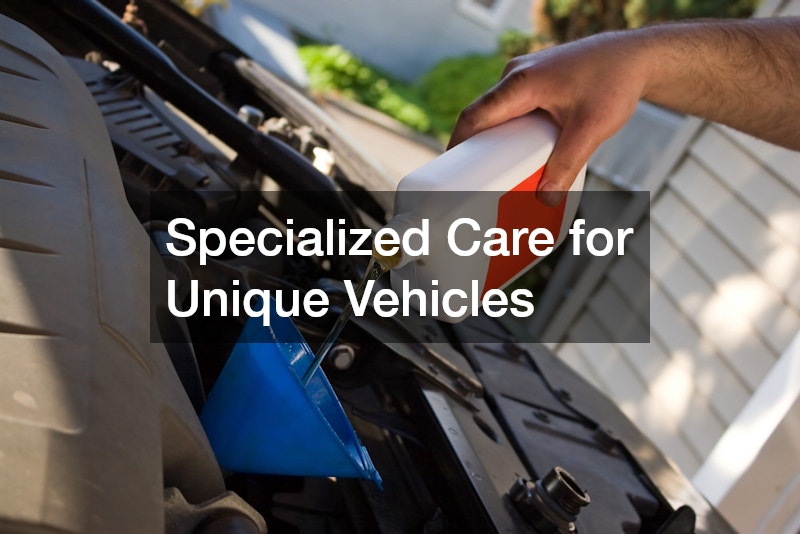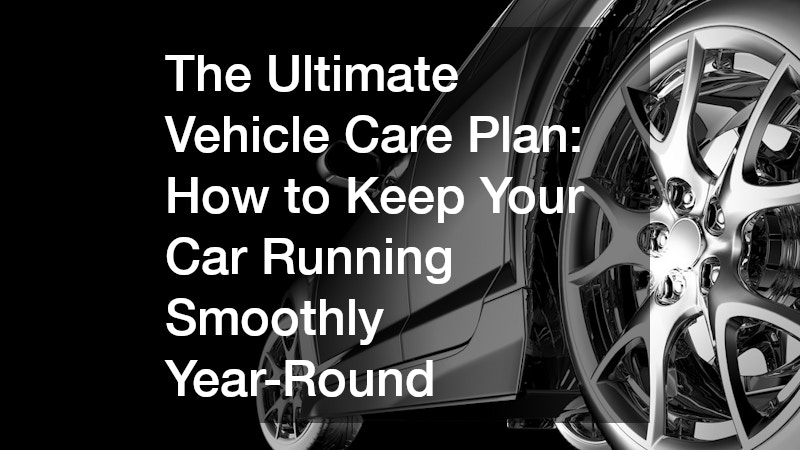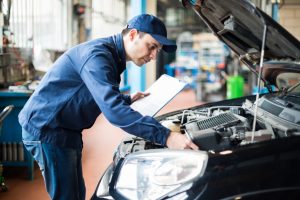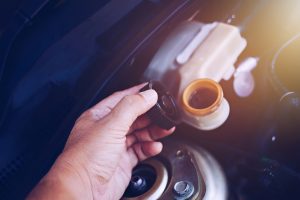Maintaining a vehicle isn’t just about avoiding breakdowns—it’s about ensuring performance, safety, and long-term value. For many car owners, the difference between a reliable ride and one that constantly needs work comes down to a consistent, thoughtful maintenance routine. The ultimate vehicle care plan goes beyond oil changes and tire rotations; it’s a holistic approach that protects every aspect of your car, from the exterior finish to the intricate mechanical systems underneath. Whether you’re managing your daily commuter, a family SUV, or an RV for weekend adventures, understanding how to care for your vehicle year-round will help prevent costly issues and keep your car in excellent shape for years to come.
A well-rounded maintenance strategy covers every part of your vehicle—from addressing minor dents before they worsen to maintaining your engine, transmission, and electrical systems. Many car owners wait until something breaks before seeking help, but preventive maintenance is the most cost-effective way to extend your vehicle’s lifespan. This guide breaks down essential maintenance steps, explains when to seek professional help, and offers seasonal advice so you can avoid emergencies and stay safe on the road. Here’s how to keep your car running smoothly, no matter what time of year it is.
1. Maintaining a Flawless Exterior and Preventing Corrosion
The exterior of your vehicle plays a crucial role in both its appearance and long-term durability. Scratches, dings, and rust spots may seem minor at first, but over time, they can lead to significant damage if ignored. Regular washing and waxing help protect your paint from harmful UV rays, dirt buildup, and road salt, which can cause corrosion. However, when dents and blemishes occur, it’s important to address them promptly. Professional car dent repair services use specialized tools to remove dents without damaging the paint, maintaining your vehicle’s original look and resale value.
Preventing corrosion is especially important if you live in areas with harsh winters or near the coast where salt exposure is common. Check the undercarriage and wheel wells frequently for rust, and rinse your car regularly during winter months. Adding a clear coat sealant once or twice a year can create an additional layer of defense against oxidation. By keeping your exterior clean, polished, and dent-free, you’re not only preserving your car’s appearance but also protecting it from long-term structural damage that can lead to more expensive repairs later on.
2. Preparing for Emergencies and Knowing When to Call for Help

Even with regular maintenance, emergencies can still happen, and knowing what to do when they arise can make a major difference. Every driver should have an emergency kit in their vehicle that includes jumper cables, a tire repair kit, flashlight, blanket, and water. While preventive care reduces the risk of being stranded, having a plan for roadside assistance ensures you’re never left vulnerable. In the event of a breakdown, flat tire, or engine failure, contacting professional car towing services provides a safe and efficient way to get your vehicle to a repair shop without risking further damage.
Towing services are especially valuable during long-distance trips or in rural areas where help may not be readily available. Many auto clubs and insurance plans include roadside assistance, which covers towing, battery jumps, and tire changes. If your vehicle experiences mechanical trouble, avoid trying to fix it on a busy highway. Instead, pull over to a safe area and contact a reputable towing company. Understanding when to seek professional help—rather than attempting risky DIY repairs—will keep you safe and prevent secondary damage to your vehicle’s systems.
3. Protecting Your Investment With the Right Coverage
Even the best-maintained vehicles encounter unexpected problems, and that’s where financial protection comes in. Having comprehensive car insurance ensures that you’re covered in case of accidents, weather-related damage, or theft. Many drivers focus only on the minimum required liability coverage, but full coverage can save thousands of dollars in unforeseen expenses. Review your policy annually to confirm that your coverage matches your driving habits, vehicle type, and current market value.
Additionally, many policies offer add-ons for roadside assistance, rental reimbursement, and glass coverage, which can be invaluable during emergencies. Choosing the right deductible and understanding what’s included in your policy gives you peace of mind knowing that unexpected events won’t derail your finances. Maintaining your vehicle also helps keep premiums lower since insurance companies often reward responsible car owners with better rates. Think of your car insurance as an essential part of your overall vehicle care plan—it’s the financial safety net that complements your physical maintenance efforts and ensures you’re fully protected on the road.
4. Keeping Your Electrical System Healthy

Your car’s electrical system is vital for everything from starting the engine to powering the lights, infotainment, and safety features. The heart of that system is the battery, which should be inspected regularly for corrosion and secure connections. Temperature extremes can shorten battery life, so checking performance at least twice a year—especially before winter and summer—is important. Reliable car batteries typically last three to five years, depending on usage and environmental conditions.
If your vehicle struggles to start, the lights flicker, or accessories run inconsistently, it may be time for a replacement. Always choose a battery that meets your vehicle manufacturer’s specifications for cold-cranking amps and reserve capacity. Keeping terminals clean and using a battery maintainer for infrequently driven vehicles can also help prolong lifespan. Many auto shops will test your battery’s charge for free, providing an easy way to ensure your electrical system is functioning efficiently. By staying ahead of battery issues, you’ll avoid one of the most common reasons for roadside breakdowns and maintain confidence every time you start your car.
5. Maintaining Visibility and Safety
Clear visibility is a cornerstone of safe driving, yet many car owners overlook the condition of their windshields until cracks become serious. Even small chips can expand quickly due to temperature changes or road vibrations, compromising your safety. Professional windshield replacements ensure your glass meets factory safety standards and restores structural integrity. A properly installed windshield contributes to airbag deployment effectiveness and roof support in the event of a collision.
Besides replacing damaged glass, keep your windshield clean and wipers in good condition. Replace wiper blades every six months or sooner if they streak or squeak. Top off washer fluid regularly and consider using a rain-repellent solution for improved clarity during storms. Interior fog can also reduce visibility—make sure your defroster and climate controls are functioning correctly. Maintaining clear vision through preventive windshield care isn’t just about appearance—it’s about ensuring your safety and that of others on the road. Regular inspection and timely replacement make all the difference in driving with confidence year-round.
6. Specialized Care for Unique Vehicles

Not all vehicles require the same level of maintenance, especially when it comes to imported or performance models. A specialized foreign car repair service offers expertise that general mechanics may not possess, ensuring your vehicle receives the attention it deserves. These technicians are trained to handle the unique systems and technology found in brands like BMW, Mercedes-Benz, and Audi, which often require specialized diagnostic tools and genuine parts.
Foreign vehicles tend to have more complex electronic systems and tighter tolerances, making precise maintenance essential for performance and longevity. Whether you need brake adjustments, oil changes, or complex transmission repairs, choosing a certified specialist ensures that your car maintains factory standards. Regular visits to an experienced foreign car technician also help detect potential issues early before they escalate into costly problems. For owners of European or Asian imports, investing in professional, brand-specific care is key to keeping your vehicle running smoothly and preserving its long-term value.
7. Staying on Schedule With Routine Maintenance
No matter what type of car you drive, routine upkeep remains the foundation of longevity and reliability. Regular oil changes, tire rotations, and fluid checks are essential tasks that keep your engine and drivetrain in good condition. A trusted auto repair shop can perform these services while also inspecting your belts, hoses, brakes, and suspension for wear. Preventive maintenance helps identify small issues before they grow into expensive repairs, reducing downtime and extending your vehicle’s lifespan.
When visiting an auto repair facility, request a full inspection at least twice a year—typically before the summer and winter seasons. This allows technicians to prepare your car for temperature shifts and potential road hazards. Always follow the manufacturer’s recommended service intervals found in your owner’s manual. Keeping detailed service records not only helps track maintenance but also enhances resale value. Consistent upkeep demonstrates to future buyers that your car has been cared for properly, reinforcing its dependability and worth.
8. Comparing Coverage and Roadside Benefits

Choosing an auto insurance provider should involve more than just comparing premiums. The best companies offer comprehensive coverage, strong customer service, and valuable extras such as roadside assistance and rental car reimbursement. Evaluate customer reviews, claim processing times, and the accessibility of local agents before committing to a policy. Understanding how your provider handles claims and what scenarios are covered will save frustration in the event of an accident or damage.
Additionally, check if your insurer offers maintenance-related perks like discounts for safe driving, new car replacement coverage, or partnerships with repair shops. Some even have mobile apps that allow you to request help instantly if you experience a breakdown. The right auto insurance provider doesn’t just protect your finances—it enhances your overall ownership experience by providing convenience and peace of mind. Reviewing your policy annually ensures it continues to meet your changing needs as your vehicle ages or your driving habits evolve.
9. Keeping Your Home-on-Wheels in Top Shape
For travelers who enjoy road trips or full-time mobile living, maintaining a recreational vehicle is equally important. Professional mobile rv repairs provide the convenience of on-site servicing, whether you’re parked at home, at a campsite, or on the road. These services cover everything from engine maintenance and plumbing to electrical troubleshooting and appliance repair. Regular upkeep prevents breakdowns that could derail your travel plans and ensures your RV operates safely and efficiently.
Before long trips, inspect your tires, brakes, and roof seals to prevent leaks or blowouts. Keep your holding tanks clean and your generator serviced. Since RVs combine mechanical and residential systems, having a trusted mobile repair technician on call is invaluable. Not only does this save towing costs, but it also keeps your lifestyle uninterrupted. A well-maintained RV means fewer surprises, smoother journeys, and more enjoyable adventures wherever the road leads you.
10. Protecting Performance With Drivetrain Care
One of the most critical yet overlooked areas of vehicle maintenance is the transmission system. Regular inspection and servicing by a local transmission repair company can prevent performance issues like slipping gears, delayed shifting, or grinding noises. Transmission problems often develop gradually and can be costly if ignored. Fluid changes, filter replacements, and leak inspections should be performed at the intervals specified in your owner’s manual to ensure smooth operation.
Modern vehicles rely heavily on precise transmission performance for efficiency and power delivery. If you notice burning smells, unusual vibrations, or warning lights, schedule a diagnostic immediately. Technicians can detect early signs of wear through fluid analysis and system scans, often saving you from major repairs. By prioritizing transmission care, you ensure that power is transferred effectively from your engine to the wheels, improving both performance and fuel economy. Regular maintenance keeps your car responsive and reliable, providing a seamless driving experience year after year.
Keeping your vehicle in top condition is more than a routine—it’s a mindset built on responsibility and foresight. The ultimate vehicle care plan addresses every component that affects safety, performance, and value. From maintaining your car’s exterior and electrical system to ensuring proper insurance coverage and mechanical health, each aspect contributes to a smoother, more dependable ride. By integrating regular inspections, timely repairs, and professional services into your yearly schedule, you not only avoid inconvenient breakdowns but also extend the life of your investment.
Consistent care means fewer surprises and greater peace of mind on the road. Whether you drive a compact sedan, a foreign luxury model, or a fully equipped RV, a proactive approach ensures that your vehicle continues to serve you reliably for years. With careful attention to detail and a commitment to preventive maintenance, every trip becomes safer, smoother, and more enjoyable—no matter the season or destination.











